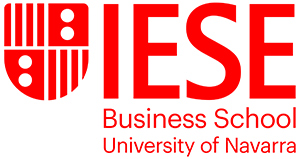The complicated events of recent years have caused millions of professionals to drastically reconsider their priorities and career plans.
Employee turnover in European and American companies is exploding, and the primary cause — according to a recent Randstad study — is the search for better opportunities in other companies or sectors.
Among these employees, many executives no longer see themselves as they used to or, at the very minimum, are no longer sure they want to see themselves the same way five or ten years from now. For some of them, incremental change is no longer enough and they feel they need to shake up their lives and their careers. If all this sounds familiar, perhaps your time has come too.
To make such a big career change and ensure it will be successful, it’s important to understand how an executive training program can help you. You’ll also need to know what’s involved in changing sectors midway through your professional life.
Reinventing yourself means adding a spectacular twist to all these transformation processes — in the middle of the game. It means making a 180 degree turn where you had only expected to turn 90 degrees and continuing to make progress towards your goals while maintaining your balance and calm.
Reinventing yourself means, ultimately, asking yourself what you want to be when you grow up and wanting to be someone completely different; it means permanently decoupling your life plan from the plan of the company that has given you nearly all your opportunities thus far; and it means rejecting any argument standing in your way that is rooted in fear or inertia. Nobody has to stay the same way forever, and if you’re not currently satisfied, neither do you.
4 steps to successfully reinvent your career
So pay attention because these are the steps you’ll need to take to successfully reinvent your professional career:
1. Learn to identify your moment
Bettina Semmel, Career Management and Counseling Manager at IESE, thinks that before you began any process of this kind, it’s essential to figure out how and when you should reinvent yourself. The signal can be received, as they say, in three different ways:
- You may have already determined the perfect moment to take the leap and have everything ready to go beforehand.
- Or, perhaps you are feeling stuck or frustrated, or are out of work and want to change that.
- Or maybe you body has just said “enough” to your current profession, and it’s time to go.
Whatever the case, Semmel advises you to “be very attentive to that need, think it through well, and design a good plan of action”.
2. Know yourself (deeply)
Semmel knows what she’s talking about, because she works in an IESE department with 60 coaches and advisors who help current and former students identify what they’re really passionate about and the areas where they can develop their full potential. That experience has taught her that “deep self-awareness” is a key requirement for anyone looking to reinvent themselves.
You have to stop, take a breath, and think. And, she says, ask yourself “where the dissatisfaction is coming from and to what extent it can be solved without turning your entire professional life upside down”. Change is an option — and sometimes highly recommendable — but it’s not an obligation and shouldn’t be taken lightly. Change doesn’t mean escape. It means building, and doing so patiently.
If reinvention ultimately emerges as the best alternative, according to the expert, “the time has come to reconsider what you want to be when you grow up and what sets you apart from the other candidates who want the same”. At this point, she adds, it’s best to get a coach who can “be your mirror and encourage you without giving you false hope”. An objective analysis of your strengths and weaknesses is fundamental.
3. Look for a change, not a job
“If you want to give your career a complete 180, chances are you won’t just jump from your boring or frustrating job to the job of your dreams in an ideal position and sector. That’s primarily because you’re probably missing basic elements like experience, training or contacts”, Semmel says. And this is where it’s particularly important to develop a “plan of action or professional transformation”.
Specifically, you need a “flexible strategy that helps you identify and define the job you want, how you’re going to turn your weaknesses into strengths to get it, and the resources you’ll use to expand your contact network in that direction, so you can take advantage not just of public job offers or headhunters, but of the positions available in the hidden market”.
Scrupulously hitting the financial sustainability goals and the milestones of that plan of action is just as essential as adapting to the unforeseen events that may occur. Reality is dynamic and the reinvention you find might be even better that what you had imagined. Don’t let it get away.
4. Manage your anxiety and be patient
Intense emotions tend to prevail in deep processes like a professional reinvention. Some are positive and healthy like the passion and excitement of something new. But other emotions are more difficult to manage and can often drive us to haste or impatience.
Cultivating the former and trying to channel the latter toward more constructive goals isn’t easy, but there are ways to do it. According to Semmel, “anxiety and distress can be mitigated with a good plan of action and achieving milestones, with the help of a coach or an advisor, and, of course, by choosing healthy habits like sport, a good diet, and stopping to take a breather once in a while”. Looking for a job is hard work. So is reinventing yourself.
If you want to reinvent yourself — and do so successfully — IESE offers executive programs as well as a Career Management department with dozens of professionals with years of experience in big sector and career changes who are there to assist current and former students. If all this still sounds familiar, are you ready to take the leap?

















